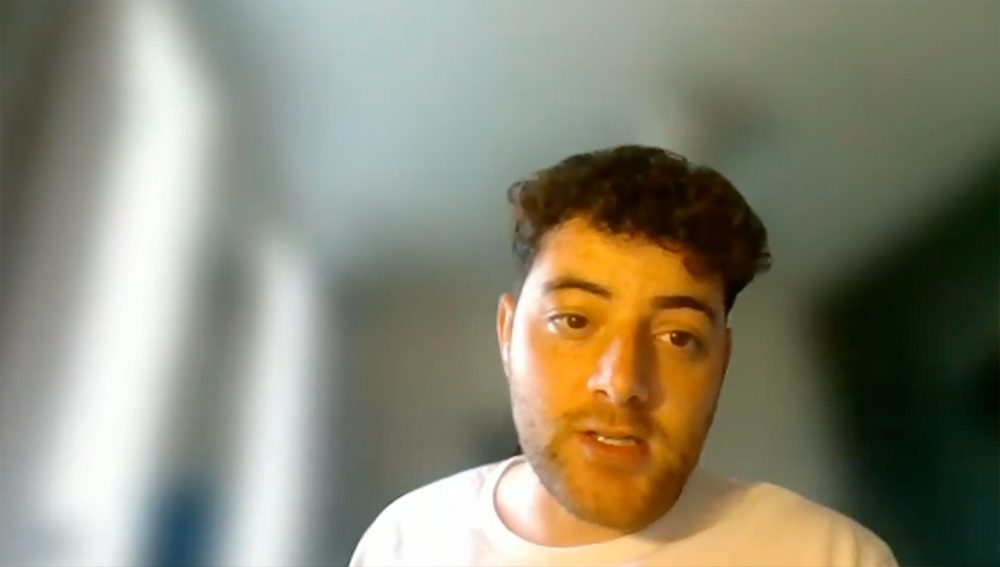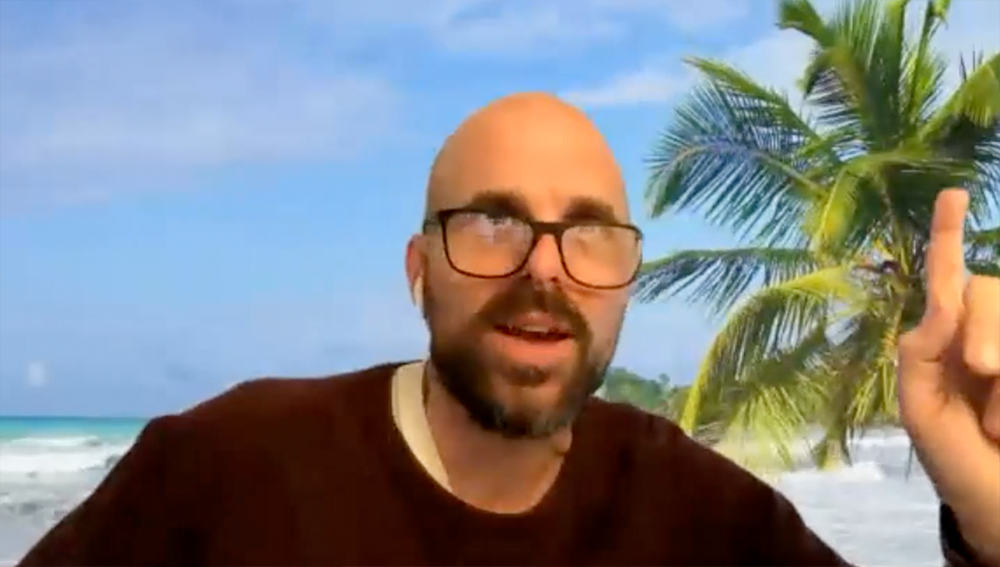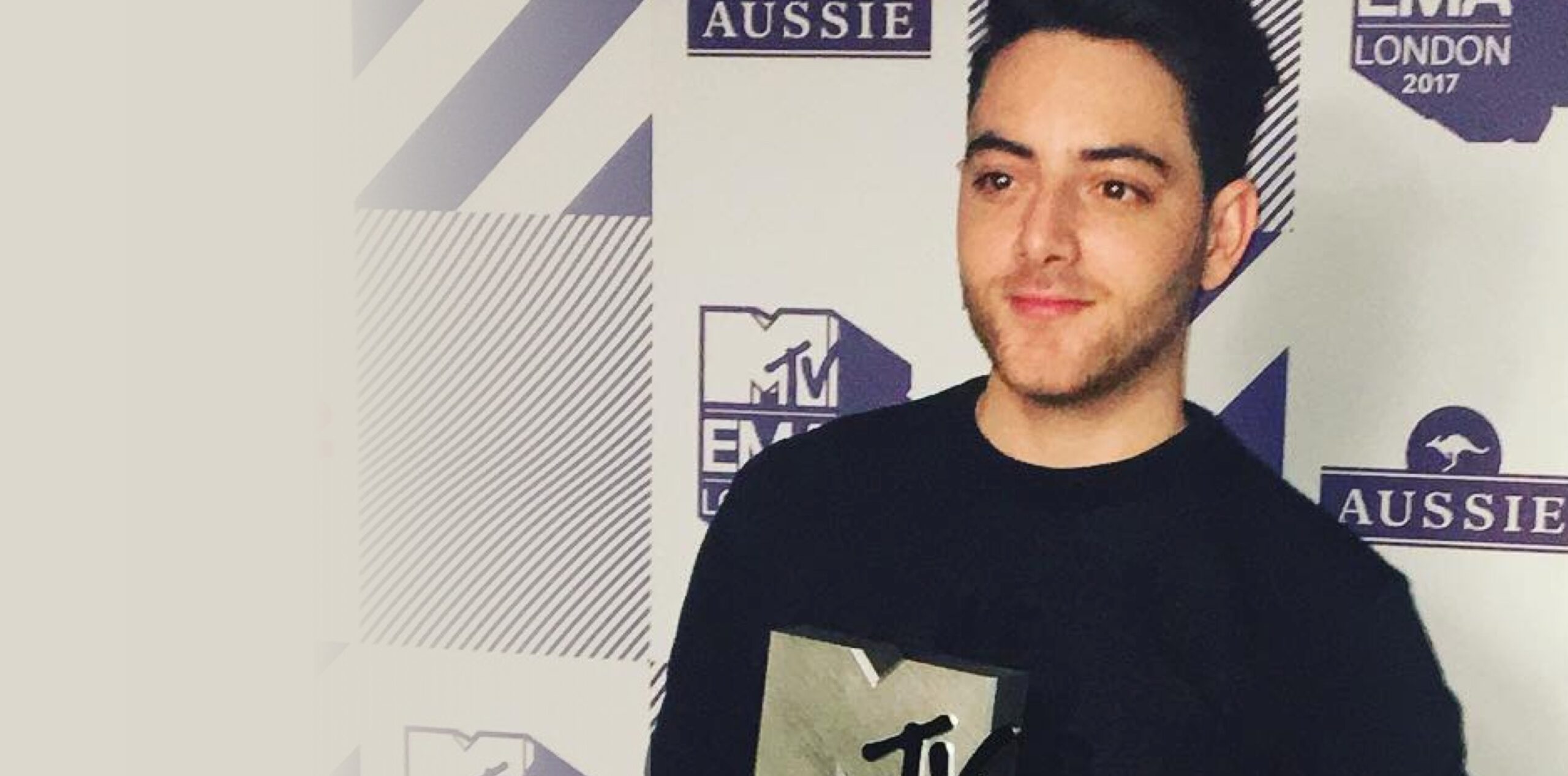More Than Just Video: Maximise your Promo Power
#HowWeListen Live: In Conversation with Corbyn Asbury took place on Tuesday, May 3rd, 2022. Corbyn joined us from the north of England.
The following transcript has been edited for length and clarity.
If you are not quite sure what YouTube has to offer to the music community, Corbyn Asbury has you covered. In part II (below), Corbyn gets into the tips and tricks of using YouTube to launch new music. He explains different strategies and the best practices that can help bring more attention to both singles and albums on the platform. He introduces us to the term: “al-gi-torial”. Plus he takes questions from some of the people attending the session. Then leaves us all with some practical action items.
Miss “Live in Conversation: Corbyn Asbury Part I“? Click here to head back.
Marc Brown: Ok, Corbyn, what do you think about timelines? How would you layer YouTube into the usual timeline?
Corbyn Asbury: Ideally, you’d want to drop the music video at the same time as the song drops. That’ll give you the most views in the first 24 hours, which will feed into the algorithm. The most important thing you can do is to lean into the algorithm and give it signals that you’re doing well.
Following that, it’s about tempo moments. The music video will be the prominent peak, but you don’t want things to drop off afterwards. So keep feeding the algorithm content, whether that’s a lyric video, a tour diary, or a BTS (behind the scenes). That stuff will lead viewers back to your channel and music video. You can make that happen with things like links in the descriptions or end cards at the end of the video.
Marc: I see! So basically, if you want to treat YouTube like any other platform, it’s equally as important. This is an excellent time to discuss the shoulder content you mentioned. So let’s say you’ve got your video. What else should you do to push that video or maybe your upcoming single or album tracks over the next few months? What kind of assets do you need?
Corbyn: I think a lot of the time, artists create assets for socials and then don’t think to put them on YouTube as well. The great thing about YouTube is that you can create shelves, and you can separate things by theme. This way you can have a shelf about your tour and then a separate shelf with your lyric videos.
If you have an official artist channel, you have a thing called a community, and on that, you can do polls and put static images. Music videos are expensive, so you’re probably only able to do one every few months. For those other weeks in the campaign, using things like the community tab is a great way to keep engaging people and keep your channel top of mind.
The other thing I want to mention is Youtube shorts (info), our current focus. They’re up to 60 seconds, and we’ve seen that short-form content is a huge driver of audio consumption, particularly for Gen Z. The USP (unique selling proposition) that we have on YouTube compared to other platforms, it can be a huge ask to have someone listen to a song, then leave and have to remember the lyrics and go to Google and type them in and find out what the song is and then go to their streaming platform to listen to it. Long journey.
With Shorts, it is within two taps of watching that video and liking the song, and you’re watching the official music video. It’s that kind of end-to-end service we hope will be completely game-changing for the industry.
Marc: If you have high activity on your channel, does that affect the recommendation algorithm?
Corbyn: Yeah, so for uploading on youtube.com, I don’t recommend posting videos on the same day because then the algorithm has to favour one over the other. Ideally, it would be best if you spaced them at least two days apart.
But simultaneously, the more content you give to the platform, the more the algorithm will trial what works and what doesn’t. The algorithm will start understanding your audience and tailoring which videos get shown to whom.


Marc: Makes sense. So, we have some audience questions. The first person wants to know if all of YouTube’s playlists are algorithmic or if actual people create some of them?
Corbyn: Both. We call it al-gi-torial. So some are algorithmic – particularly ones that are based on what you’ve listened to previously. And then there are some that a team curates, but the order of the tracks is algorithmic.
Marc: Is it possible to submit things for playlists on YouTube?
Corbyn: Absolutely.
Marc: Ok, great! Another question: What opportunities does YouTube provide to independent artists and labels?
Did you already answer that? You said everyone gets everything – you don’t favour one company over another.
Corbyn: No, we certainly don’t. If anything, we make a conscious effort to serve the indie community and ensure they have the tools to succeed. Last year, we paid more to the indie community than to major record labels.
In terms of programs, we have programs like the Foundry Fund, which is a handful of artists that we give financial support to.
We also work with companies like MMF (Music Managers Forum), and we have an accelerated program where we fund a select number of independent managers to partake in a 12-month program.
Outside of the financial help, we also do education, so it’s almost like a school, and we teach them every element of the music industry so that they can become better managers. And then we have programs like Higher Up, which focuses on the Black community.
Marc: That’s great. Thank you for going through all of those. The next question, from someone who works at a label, is asking if an artist can get an Official Artist Channel without going through a distributor?
Corbyn: I was talking about that before. But it doesn’t automatically happen, you’ll have the channel that you own, and you need to request it manually.
Marc: So, can you get one without going via a distributor?
Corbyn: No, you need to go through a distributor.
Marc: Next, can an artist edit the background of the VEVO music on YouTube without a distributor?
Corbyn: Well, it depends if you mean edit the actual video after you’ve uploaded it or if you mean adding metadata and titles and descriptions.
Marc: So you can’t edit the video, but you can edit the metadata?
Corbyn: Yes, correct. Once a video is uploaded, it’s uploaded, and if you’re not happy with it, you have to re-upload it.
Marc: Someone is saying that it’s a pain that you need 1,000 subscribers for the partner program.
Corbyn: To go into a YouTube partner program which is where you get revenue from ads, you need 1,000 subscribers and 300 watch time hours.
Marc: Question: How can an independent, non-performing songwriter get more subscribers to get new music to appeal to labels and other artists? That’s an interesting question.
So, how does an artist generate music discovery on YouTube versus other platforms? Is there anything different about it?
Corbyn: There are two ways to look at it. One way is to lean into trends and see what’s popular on the platform and generate content like that, even if it’s not necessarily music, Music makes up a relatively small percentage of watch time on YouTube, a lot of it is gamers or sports. If there’s a way for your channel to play in those spheres, then you should do that.
The other way is YouTube shorts. It will tell you what tracks are trending. You can also go to youtube.com/trending, and it’ll tell you what’s trending for your market, and you can do covers of those songs to generate more views. Or, if you don’t want to do a whole 3 or 4-minute thing, then you can go to YouTube shorts and do it there in 30-second clips.
Marc: That’s great. I think that’s something everybody struggles with when they’re starting out, not knowing how to build an audience. Some of those ideas are great.
Corbyn: Make sure to tag your videos with hashtags, make your metadata accurate, put links to your social media platforms, and have a link to subscribe at the end of the video.
Also, have the right thumbnail – don’t choose a clickbait thumbnail because if you do that, you’ll get some great views initially, but people will bounce out quickly, and then the algorithm will de-prioritize that video on that channel because people aren’t staying to engage with it.
Finally, make sure to have correct descriptions. If it’s an official music video, make sure that people know that it’s the official video. Otherwise, as a viewer, people won’t know that this is a premium piece of content. That’s a simple thing that everyone forgets to do.
Marc: This seems like a kind of SEO (search engine optimisation) thing where people need to help YouTube understand what content you’re giving it. Can you explain what makes a good title, for example?
Corbyn: For a music video, it’s pretty simple – it’s the artist name, then the track title, then the “Official Music Video” in brackets. If it’s episodic, make sure you put the episode number in it so that people know. And also, put it into a playlist so that it loads in chronological order.
Otherwise, try different titles. Try one, and if it doesn’t work, try another one. YouTube will automatically give you 3 pre-defined options, but you can choose your own as well.
Marc: This is great. Thanks so much!
Corbyn: My pleasure, so if I could leave people with any practical action items, it would be to try YouTube shorts as both a consumer and creator. The algorithm is very excited about this short content at the moment, and because there aren’t a huge amount of people making shorts right now versus other platforms, there are fewer fish in the pond to fight with. It’s a great time to get ahead of the curve.
I’d also tell people to download the YouTube studio app and look at the analytics, as this might inform your decisions of when to upload your videos etc. You can also use it to plan tours if you know where most of your fans live.
Marc: Can you explain the YouTube studio app to people who don’t know?
Corbyn: So what this app essentially shows is a channel and video-level picture of how you’re doing. It has data on how many views you have, where they’re coming from, the traffic source, demographics etc. You can also see how your releases compare against each other.
If you’re getting fewer views coming from recommended, that’s a good sign. It means that people are looking for your content. A passive viewer is someone who has been served your video as a recommendation and has just stayed to watch, whereas an active one is one who searched for you as an artist. If it’s lower than 80%, that means that people are actively looking for you as an artist.
Marc: Brilliant. nd then if you have interesting content that’s not purely music, will that also help?
Corbyn: Yes, absolutely. Yes, absolutely. You’re getting into different spheres where your music will not necessarily reach otherwise.
Marc: Well, Corbyn, that was super interesting, and I learned a lot!
Corbyn: Thank you, nice to see you all.




